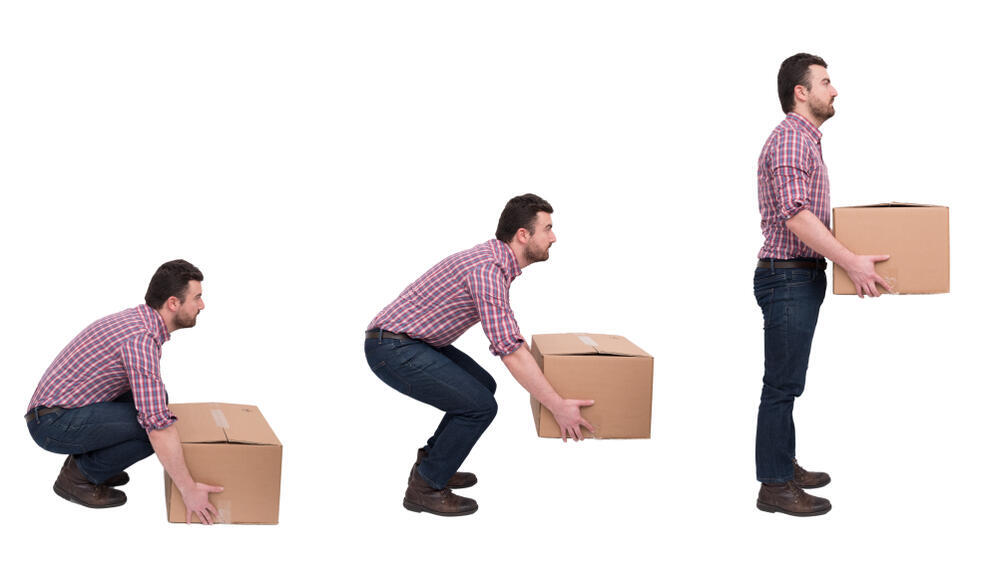Getting your Trinity Audio player ready...
Lower back pain stands out as a prevalent issue that significantly impacts one's quality of life. In fact, it ranks among the most widespread problems within the realm of orthopedics, affecting a staggering 80% of individuals at some stage in their lives. Despite its ubiquitousness, it's an issue loaded with preconceived propositions and ill-advised notions.
"I was taught to lift with my legs to protect my back"
We've heard this plenty of times before, and thought it prudent to ascertain its validity by delving into the research literature. Our investigation led us to the first study we examined, which scrutinized the movement patterns of the lower limbs and lower back during the performance of 100 distinct lifting tasks. The primary aim was to explore the connection between these movements and lower back pain. The study enlisted both weight lifters who experienced lower back pain and those who did not.
Surprisingly, the findings revealed that the group afflicted with lower back pain exhibited a distinct lifting technique. They lifted weights slowly, assuming a squat position with a straight back, essentially employing a "legs-first" approach. This contradicts the prevailing assumption that lifting objects using the legs exclusively can prevent lower back pain.
This study, along with numerous others, challenges the misconception that such a lifting technique safeguards against lower back pain. While individuals with lower back pain commonly adopt this method, it does not necessarily provide preventive benefits.
"Bending the back while lifting could trigger a spinal disc herniation"
This prevailing assumption, often propagated by professionals and doctors, begs closer examination for its veracity. In essence, the answer is a resounding "no." To comprehend the origins of this assumption, it is essential to trace its roots back to the 1960s when experiments were initially conducted on cadaver spines to assess the pressure required to rupture a disc. Since then, similar experiments have been conducted, perpetuating this notion.
However, the crux of the matter lies in recognizing that the human body is not a mere mechanical apparatus but a dynamic living organism. It possesses the remarkable capacity to compensate, mobilize forces, and adapt through the intricate interplay of muscles, tendons, and changing guides during movement.
When we lift an object, the involvement of the back alone is not isolated; instead, a complex chain of forces is generated throughout the entire body to accomplish the lifting task.
Furthermore, numerous studies investigating lower back pain have consistently discovered a significant correlation between such pain and factors like fear of movement and the perpetuation of false beliefs.
These beliefs include the erroneous notion that engaging in movement will exacerbate the situation. Thus, the relationship between lower back pain and psychological aspects should not be overlooked, as they play a substantial role in shaping perceptions and experiences of pain.
With the understanding that comparing living tissue to deceased tissue is inherently flawed and that avoiding movement can exacerbate back issues, let us delve deeper into the matter. A recent study, published in 2021, aimed to examine the forces exerted on the vertebrae and discs in the lower back when lifting a 15 kg object from the floor.
The study involved three distinct groups: the first group lifted the object in a squat position, employing the legs; the second group lifted the weight without any specific instructions, adopting their preferred lifting technique; and the third group was explicitly instructed to lift the weight with a rounded back.
Surprisingly, the study's findings revealed no significant variance in the forces acting on the vertebrae and discs among the three different lifting approaches.
So, does lifting with a rounded back truly expose us to the risk of injury and pain? Surprisingly, there is a dearth of research evidence supporting such a claim.
In fact, every study conducted with modern methodologies, aimed at investigating this correlation, has failed to establish a connection or causality between lifting with a rounded back, back pain, and an increased risk of injury.
"Don't lift weight, it'll hurt your back"
Let's explore this commonly heard statement. Is there any validity to it? To examine this claim, we turn to a captivating study involving a unique cohort: 101 menopausal women, aged 58 to 75, who had been diagnosed with varying levels of reduced bone density.
The research participants were divided into two groups. The first group underwent a comprehensive training program that commenced with one month of low-intensity exercises, allowing their bodies to acclimate and familiarize themselves with the movements.
Following this initial phase, the group progressed to a training program that included challenging exercises like deadlifts and squats with progressively heavier weights.
In comparison, the second group engaged in low-intensity resistance training and incorporated regular walking into their routines. The aim was to create a basis for comparison between the two approaches.
Results were conclusive. Across all tested parameters, the group engaged in high-weight training demonstrated clear advantages in terms of bone density and overall functionality, with only a solitary instance of back pain reported.
Consequently, the conclusion drawn from this study, as well as numerous others, is that when weightlifting is conducted under proper supervision and in a gradual manner, it does not lead to back pain.
How to implement findings in your daily lives
Looking to minimize back pain? As per the aforementioned principles, the initial step involves ensuring the strength of your back matches the demands of your daily activities. For instance, if you find yourself needing to lift a ten-kilogram child from the floor, it's crucial to have the strength to lift at least 33 pounds from ground level.
In addition to strength, our back necessitates a broad range of motion to accommodate various movements such as turning, bending, and engaging in combined bending and rotation. Without maintaining these ranges, expecting your back to perform movements beyond its capabilities would be unrealistic.
Hence, incorporating movement exercises specifically targeting the lower back becomes essential in preparing it for the rigors of everyday tasks.
So can I go lift whatever I please?
We wouldn't. As previously mentioned, it is crucial to adequately prepare our body, especially the lower back, to minimize the risk of injuries. This involves a gradual and moderate approach. Once you have focused on strengthening your back and enhancing its range of motion to handle the required tasks, the specific manner in which the action is performed, whether with a straight or rounded back, becomes less significant.
Denial Markovich - Working on your back
For a practical demonstration of gradually practicing in cases of chronic back pain, you can refer to the video provided in this article. The aim of these exercises is to expose the body to forward bending movements with a rounded back and, through consistent practice, reinforce its resilience. Best of luck on your journey.







